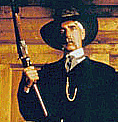Thursday, October 13, 2005
Power in diffusion, or, A Pack, not a Herd for Techies
The October 13 issue of Electronic Design features an unexpected pat on the back for the Amateur Radio Service or, as it is most commonly called, ham radio. It appears that for all the high-tech gear that modern science has produced, it mostly went offline when Katrina whacked the New Orleans area earlier this year, leaving the area without reliable communication with the rest of the world. Only amateur radio with its decentralized, localized approach was able to establish communication for emergency purposes almost immediately after the disaster. They could be called the "tech militia". Each operator operates his own equipment which he can build, maintain and operate by himself.
As old as radio itself, hams were here before radio was licensed. They were the experimenters with communication; the tinkerers; the haywire-and-high-voltage people who learned the craft when it was mostly unexplored and uncharted. Hiram Percy Maxim, the founder of the American Radio Relay League, envisioned a national network of operators to carry messages in community service. Now hams occupy spectrum virtually from dc to daylight and communicate with voice, data, and video and still maintain the same focus on community service.
It's good to see amateur radio get credit for what has always been their strength: community service in times of emergency. On a broader view we should see here another strong evidence of the powerful advantages of decentralization and individual responsibility. When the strength is at the bottom of the pyramid it's almost impossible to turn over.
Update: the ARRL has a recap of emergency operations from an in-house perspective here.
As old as radio itself, hams were here before radio was licensed. They were the experimenters with communication; the tinkerers; the haywire-and-high-voltage people who learned the craft when it was mostly unexplored and uncharted. Hiram Percy Maxim, the founder of the American Radio Relay League, envisioned a national network of operators to carry messages in community service. Now hams occupy spectrum virtually from dc to daylight and communicate with voice, data, and video and still maintain the same focus on community service.
It's good to see amateur radio get credit for what has always been their strength: community service in times of emergency. On a broader view we should see here another strong evidence of the powerful advantages of decentralization and individual responsibility. When the strength is at the bottom of the pyramid it's almost impossible to turn over.
Update: the ARRL has a recap of emergency operations from an in-house perspective here.
